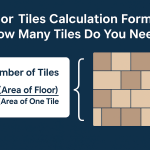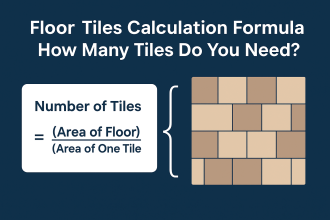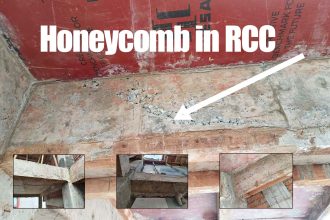Hello guys, what’s up, today on this page I will discuss the topic of the Bituminous Road layer. How to construct a bituminous road layer what is a type of bituminous road, surface dressing, seal coat, etc. Bituminous road layer is the most usable method in road construction Technology.
The bituminous road in which bitumen is used as a binder term a bituminous road.
Stage development of a bituminous road layer can adapt depending on the traffic demand but not in the cement concrete road.
Types of Bituminous Road Construction Layer
Classification Based on Construction Technique
Interface Treatments like prime coat and tack coat
Surface Dressing and seal coat
Grouted or Penetration macadam
Premix construction like bituminous, Bound Macadam, Bituminous carpet, Bituminous concrete rolled or sheet asphalt, and mastic asphalt.
Classification is based on the temperature of the binder
Hot Mix ( bituminous and tar required heating) Binder and aggregate both are heated before being used.
Cold Mix ( cut back or emulsion) binder and aggregate are not heated.
Classification based on the method of mixing
Road mix method materials mixed at the road site.
Control point mix method.
Classification is based on the texture exhibited by compacted layers.
Open-graded (premixed carpet)
Dense graded ( bituminous carpet )
Interface Treatment
This is the thin layer of bituminous binder to provide between old and new layers on the road.
When the bituminous wearing surface is placed upon a previously treated computed foundation layer such as gravel earth stabilized soil, kankar, or Water Bound Macadam.
It is necessary that newly laid bituminous surfacing possess a bond with the existing base at the interface which can develop with the help of bituminous material and this treatment is known as interface treatment.
Type of Interface Treatment for Bituminous Road Construction
Prime coat
It is the first application of low-viscosity liquid bituminous material and is applied to existing bases of the previous surface like the WBM road. Before the application of only bituminous treatment to the surface of the road.
Function
Develop adhesion or bond between the base and the wearing surface.
Seals the pores and capillary void thus making it waterproof.
Bind together only loose aggregate on the existing surface.
Construction steps of prime coat.
Materials Moisture Content cutback of suitable grade or viscosity. The existing surface pavement was repaired and cleared. The bituminous primer spray uniformly uses a mechanical sprayer at a rate of 7.3 to 14.6 kg per m² depending on the porosity of the surface. The prime surface is allowed to curve for at least 24 hours. During this period no traffic was allowed.
Tack coat
It is the single initial application of bituminous materials on an existing pavement surface that is relatively impervious such as an existing bituminous cement cone or a previous surface like WBM which has already been treated by a prime coat.
Function
To make the bond between the existing road pavement surface and a new road pavement surface. It ensures adhesion between the existing surface and the new bituminous surface.
Construction steps of tack coat
The surface of the existing pavement layer is to clear to remove dust and dirt.
A tack coat is applied by spreading bituminous material of higher viscosity like hot bitumen at the rate of 4.9 to 9.8 kg per 10 m² depending on the surface type.
Seal coat
A seal coat may be defined as a fragile surface treatment or single-coat surface dressing. Which is either applied as a final surface or to the existing surface, which cracks or is worn out.
The function of the seal coat
Seal the surfacing against the ingress of water.
Increase the resistance to skidding.
To increase the existing surface’s strength and BC (bearing capacity).
Construction of seal coat
The following are the construction procedures for the seal coat. Friends, you can see it and get knowledge about it.
Surface Preparation
Surface defects such as potholes are repaired and the existing surface is cleaned.
Asphalt material application.
Typically an asphalt emulsion is applied from a spray or sprayer to the surface of the existing pavement.
Aggregate applications.
A thin aggregate cover is sprayed over the asphalt material it has set. Aggregate has uniform gradation.
Aggregate embedding.
A roller is used to push the aggregate into the asphalt material and seal it firmly against the underlying pavement generally about 50 % of each aggregate particle should embed in the asphalt material after final rolling.
Surface Dressing
Surface Dressing is the process of finishing off a previously prepared surface bituminous. in this phase, more than two bituminous materials are applied as a coating to the road surface. The coat consists of bituminous binders and chopped aggregates. This is a bituminous road finishing with the help of a bituminous binder.
Function
To prevent damage to roads due to waterproofing.
The road can be easily cleaned and remove dust from the road.
The smooth and clean surface of the road minimizes the wear and tear of vehicle tires.
Advantages of Bituminous road
The bituminous road does not produce cracks on the road surface for a long time.
The maintenance cost is much less than others.
Bituminous roads are waterproof so they can’t be damaged by water.
The bituminous road is smooth and durable.
The road can provide comfort to the traffic/ vehicles.
Disadvantages of bituminous road
If the Bituminous materials are used in excess amounts then it affects the performance of this type of road.
Bituminous road pavement is not more durable pavement
Comparatively low tensile strength to concrete pavement.
Extreme weather and unsuitable weather conditions tend to make bituminous pavement slippery and smooth.
Bitumen with impurities can contaminate the soil and, therefore, groundwater when melting.
Conclusion
So guys this is the short information of Bituminous Road. Advantages and disadvantages of this pavement. Classification of bitumen roads with different bases and treatment methods of bitumen road. Different types of road treatment methods are included in this post.
FAQs
What is the concept of a bituminous road?
This is one of the types of road pavement made of bitumen which has a highly vicious nature, is black in color, has elastic properties, and is durable.
What are the benefits of bituminous roads?
The major benefit of the Bituminus road is improved durability of the road.
What is the failure of bituminous roads?
The failure of bituminous roads is attributed to factors such as water infiltration, traffic loading, and poor construction quality.
How deep is Bituminous Road?
The depth of a bituminous road typically ranges from 50 mm to 100 mm.











![🏡 How to Build a Strong House in Nepal: Why Most Homes Fail and What You Should Do Instead [5 Reason] build a strong house in Nepal](https://techmeengineer.com/wp-content/uploads/2025/07/WhatsApp-Image-2025-07-02-at-07.01.45_7560519f-330x220.jpg)
